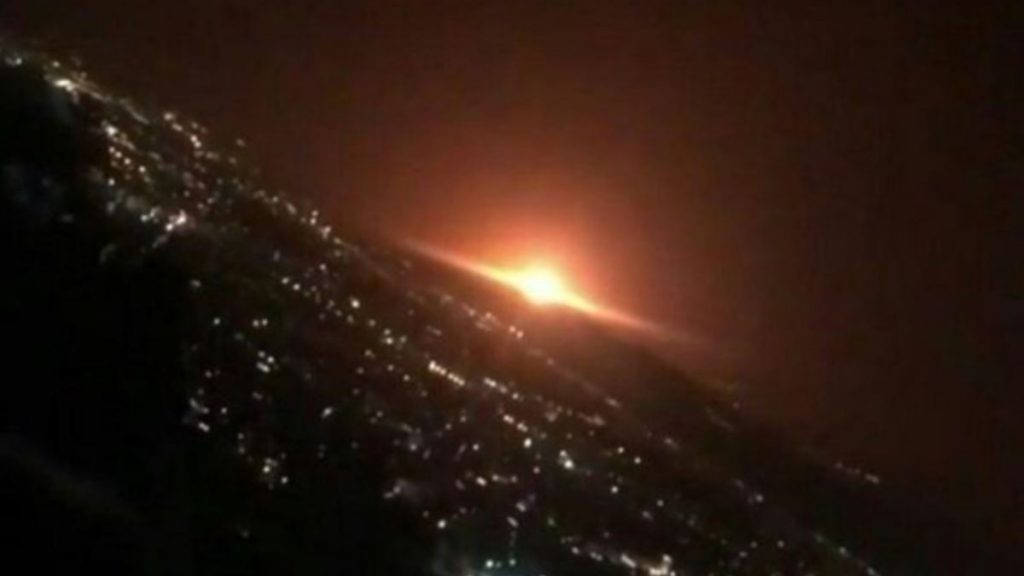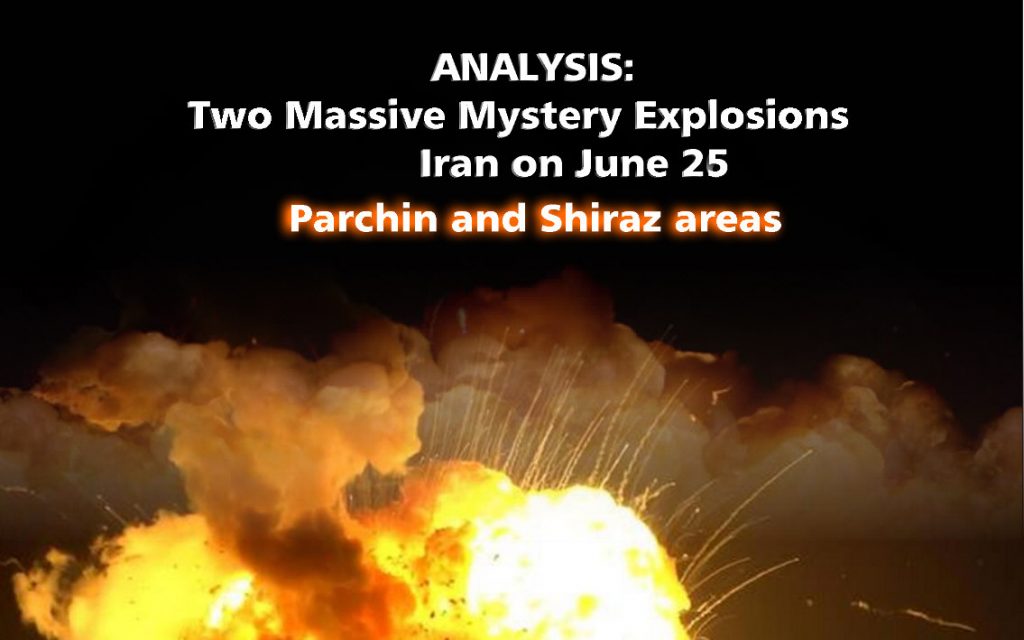
ADDITIONAL INFORMATIONAL
On June 25, Tehran residents were treated to an unusual sight, a bright orange light in the nighttime sky over Eastern Tehran. Iranian officials soon claimed that what had happened was a mere explosion of industrial gas tanks in the general area of Parchin, the site of Iran’s vast explosives, rocket, and ammunition manufacturing complex. Yet a closer examination of videos posted on social media seemed to suggest that the blast took place in the Khojir region of Tehran, something finally confirmed by satellite pictures a day later.
While Parchin has gained notoriety for its role in Iran’s pre-2003 nuclear weapons program, Khojir has generally escaped public scrutiny despite being the single most important site associated with Iran’s ballistic missile program. The vast area nestled in between the mountains of East Tehran houses various entities of the Aerospace Industries Organization, itself subordinate to Iran’s Ministry of Defense and Armed Forces Logistics (MODAFL).
The two largest of these are the Shahid Bakeri Industrial Group (SBIG) responsible for the production of Iran’s solid-propellant missiles and the Shahid Hemmat Industrial Group (SHIG) producing Iran’s liquid-fuel ballistic missiles. Both groups, in turn, entail a myriad of sub-companies in Khojir as well as other parts of the country dedicated to the various tasks of missile production.
Shiraz has several sites of nuclear weapons development interest:
- Rudan Nuclear Research Center, located near the town of Fasa near Shiraz in Fars Province where yellowcake is reportedly produced.
- Fars 10 megawatt pool-type research reactor, schedule to come online this year.
- Shiraz missile plant facility
- The Bushehr nuclear power plant, as well as Abadeh, which Israel revealed in 2019 was a critical nuclear storage site. Both are within 100 kms south and north of Shriaz respectively. The Bushehr power plant supplies electricity to Shiraz. Abadeh was reportedly dismantled following Israel’s revelation, and its replacement site has not been publicly revealed.


So how exactly does the explosion fit into this picture? Satellite images and a short video released by Iranian TV show the exact location of the blast at a small facility consisting of two buildings and two roofed support structures within its own security perimeter. The exact purpose of this facility is unclear, however large numbers of discarded blue industrial plastic drums visible in satellite pictures indicate some sort of chemical production or treatment taking place in the area.
The facility adjacent to the site of the explosion shows all the telltale signatures of solid-propellant production, like earthen berms to shield buildings against accidental explosions, buildings of odd shapes and geometry housing chemical production equipment and a pit to burn hazardous fuel residue. Thus, it seems likely that the site of the explosion is functionally related to one of SBIG’s solid propellant production sites. While higher-resolution imagery of the site has yet to be released, it seems that damage to the overall facility is relatively limited.
It is not clear why Iranian officials decided to name Parchin as the site of the explosion instead of the actual site located almost 20km away from the Parchin complex. One reason could be a reluctance to talk about the complex for reasons of operational secrecy. While Parchin has been officially mentioned in Iranian media and was the subject of a highly publicized visit by Iran’s Supreme Leader in 1998, Iranian officials have barely acknowledged Khojir.
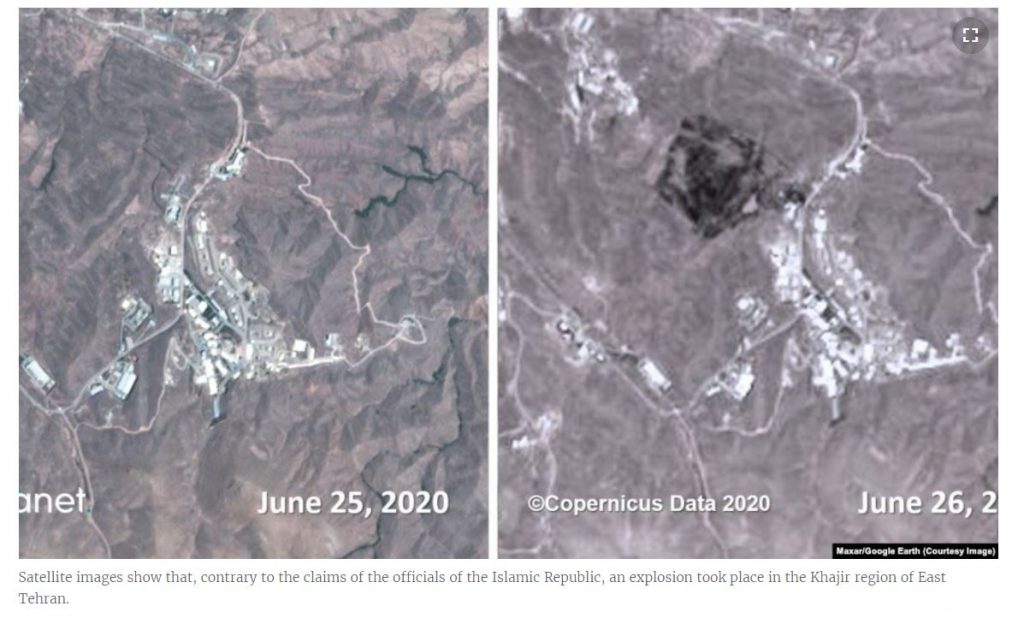
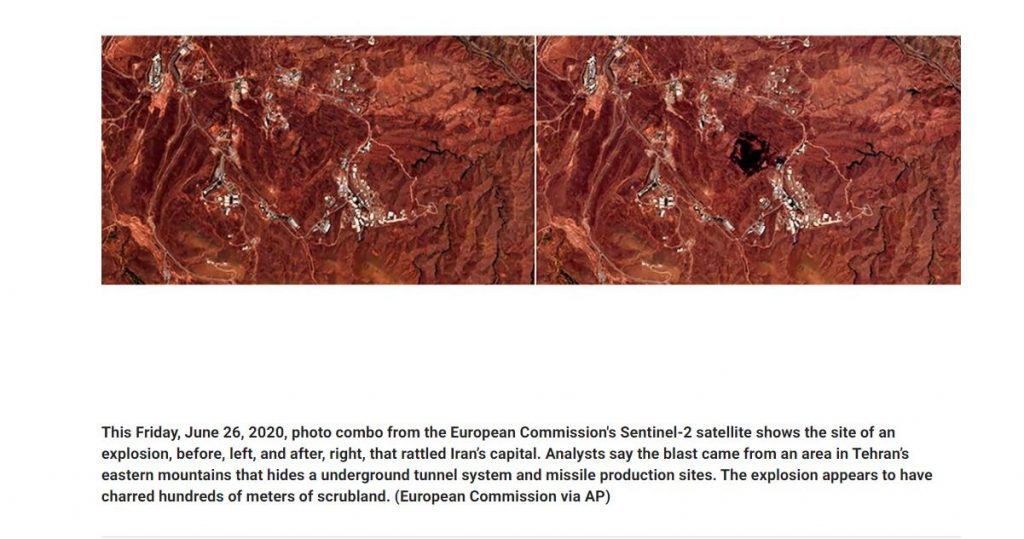

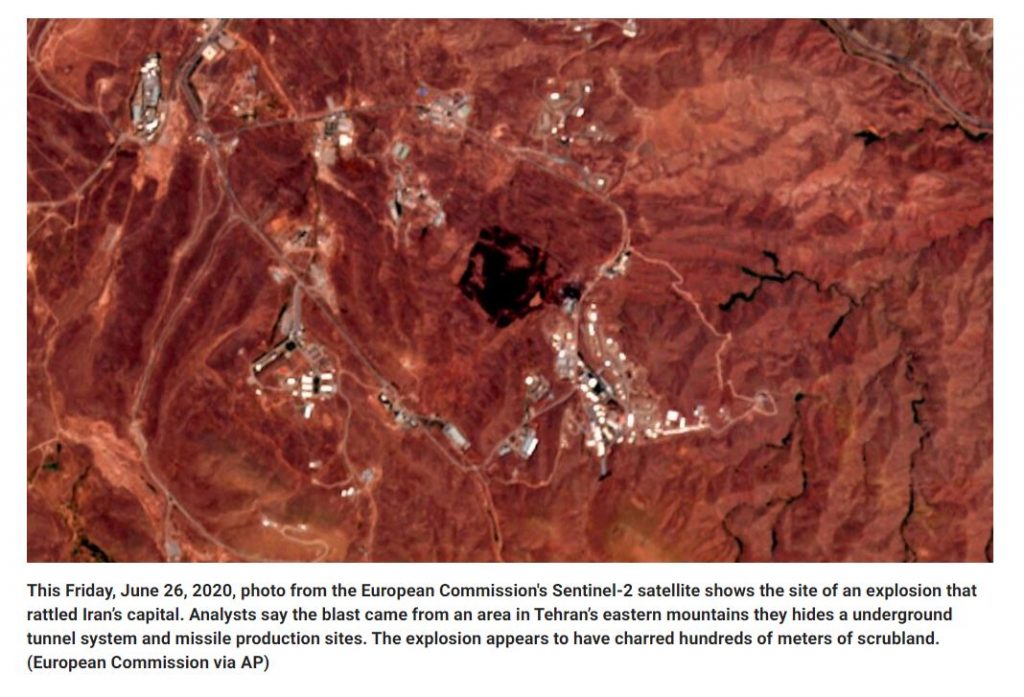
Experts from the Washington-based Centre for Strategic and International Studies, cited by the news agency, in turn, said that Khojir purportedly has “numerous tunnels, some suspected of use for arms assembly”. The International Atomic Energy Agency has previously said Iran might have conducted tests of explosives for nuclear weapons on the site where the overnight blast purportedly took place, but they didn’t have solid evidence to prove Tehran indeed performed such tests. Iran strongly denies allegations that it is pursuing the development of nuclear weapons.
According to the AP, an area located 20 kilometres east of Tehran charred from the explosion could be seen in photos. The site hosts Iran’s Khojir missile facility of the Shahid Bakeri Industrial Group, which manufactures solid-propellant rockets, according to Fabian Hinz, a researcher at the Middlebury Institute of International Studies in Monterey, cited by the AP.
- Pazhouheshkadeh site: Located at the Parchin military complex in southeast Tehran, the Pazhouheshkadeh site is the center for METFAZ’s tests, according to the NRCI. METFAZ (the Center for Research and Expansion of Technologies on Explosions and Impact or Markaz-Etahghighat va Tose’e Fanavari-e-Enfa in Farsi) is a subdivision of SPND (which is Sazman-e Pazhouheshhaye Novin-e Defa’i in Farsi) – in English, the Organization of Defensive Innovation and Research – a fairly newly-constructed site to the north of the sprawling Parchin base. SPND was first exposed by NCRI in 2011 and was sanctioned by the State Department in 2014. Breitbart News previously reportedthat “large portions of METFAZ activities are carried out at Iran’s Sanjarian site and then transferred to the Research Academy which is situated within the Parchin nuclear site.”
- Nouri Industrial site: Located at Khojir military complex in southeast Tehran, this site is reportedly committed to actively pursuing the production of nuclear warheads which is conducted by the Hemmat Missile Industries Group.
- Hafte Tir site: Located in the Hafte Tir military complex near the city of Isfahan, this site belongs to the Defense Ministry. It is a mere six miles (10 km) away from the town of Mobarakeh, which is scored with underground tunnels, is under the supervision of SPND. The Hafte Tir military industries are responsible for a large portion of the Iranian regime’s ammunition production, the NRCI report asserts.
- Sanjarian site: This site is affiliated with METFAZ and located in the vicinity of the Parchin military complex. The report notes that “a major portion of the tests and experiments that used to be conducted at Sanjarian, have recently been transferred to Pazhouheshkadeh in Parchin. While Sanjarian is still functional, it has become semi-active as of late.”
